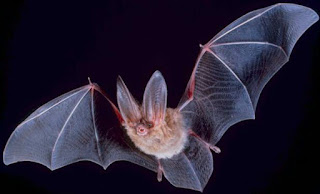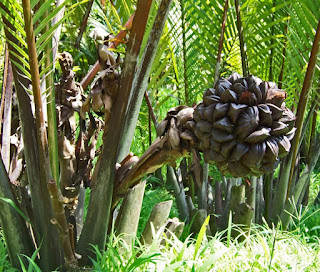NIPAH Virus - A newly emerging zoonosis in Kerala 2018
Nipah Virus is a newly emerging zoonosis(a disease which can be transmitted to humans from animals) airborne transmission infection and can affect those who come in direct contact with contaminated bodies. This virus was first identified in Malaysia and Singapore in 1998. At that time, it was primarily caused in pigs and through them got transferred to humans. The natural host of the virus are fruit bats of the Pteropodidae Family, Pteropus genus. The virus can be transferred through infected bats, pigs or humans who have been infected. In 2004, humans who consumed the date palm sap infected by fruit bats, caught the virus as well.
Signs and symptoms
 |
| NIPAH VIRUS - A Newly emerging zoonosis |
Nipah Virus is usually associated with inflammation of the brain due to which severe days of fever can often lead to a state of confusion, disorientation and even persistent drowsiness. If not taken care of, these symptoms can even cause a coma in a span of 24-48 hours. There are many patients who show neurological, respiratory and pulmonary signs as well. Therefore, do not ignore any such signs.
 |
| Signs and symptoms |
Some common signs and symptoms of NiV are
Headache,
Fever,
Nausea,
Dizziness,
Drowsiness and
Mental issues such as confusion.
These symptoms can last up to 7-10 days. Watching out for respiratory illness during the early stages is also a must.
Prevention and cure
 |
| NIPAH in Kerala |
As of now, there is no particular vaccine available purely for the treatment of Nipah Virus. The only way to treat this virus is through intensive supportive care.
The primary carriers of NiV in humans are the respiratory secretions. If you are near anyone who has the infection and have the chance to breathe in their out-breath, you can get infected too. The risk gets very high is the patient has respiratory symptoms, such as coughing and sneezing. Because of the same reason, never share food, bed or be very close to a sneezing or coughing NiV patient. At any cost, one should not come in contact with the saliva of an infected person.
Following are certain facts about the spread of Nipah:
 |
| Infected bats shed NIPAH Virus |
* Infected bats shed virus in their excretion and secretion such as saliva, urine, semen and excreta but they are symptom less carriers.
*The NiV is highly contagious among pigs, spread by coughing.
* Direct contact with infected pigs was identified as the predominant mode of transmission in humans when it was first recognized in a large outbreak in Malaysia in 1999.
*Drinking of fresh date palm sap, possibly contaminated by fruit bats (P. giganteus) during the winter season, may have been responsible for indirect transmission of Nipah Virus to humans.
*There is circumstantial evidence of human-to-human transmission in India in 2001. During the outbreak in Siliguri, 33 health workers and hospital visitors became ill after exposure to patients hospitalized with Nipah Virus illness, suggesting nosocomial infection.
*During the Bangladesh outbreak the virus is suggested to have been transmitted either directly or indirectly from infected bats to humans.
*Human-to-human transmission of NiV has been reported in recent outbreaks demonstrating a risk of transmission of the virus from infected patients to healthcare workers through contact with infected secretions, excretions, blood or tissues.
HOW DID THE VIRUS SPREAD IN KERALA?
 |
| Fruit Bats in Kerala |
It is being reported that three people who died due to this in Kerala may have consumed mangoes bitten by fruit bats as infected mangoes were found in their houses.
WHY ARE BATS SUDDENLY TURNING DANGEROUS?
As per the WHO, “There is strong evidence that emergence of bat-related viral infection communicable to humans and animals has been attributed to the loss of natural habitats of bats. As the flying fox habitat is destroyed by human activity the bats get stressed and hungry, their immune system gets weaker, their virus load goes up and a lot of virus spills out in their urine and saliva.” This means that ultimately, what is at blame is human activity only.
Nipah virus infection is an emerging infectious disease of public health mainly in the South-East Asia Region.
Salient Features:
1. It is a Zoonotic disease (spread between animals and people)
2. Natural Host : Fruit bat
3. Intermediate host : Pigs (occasionally)
4. Incubation period: 5 to 14 days
5. Duration of illness: 3 to 14 days
6. Cardinal/Presenting symptoms: Fever,Signs of Pneumonaia, Head ache, other neurological symptoms
7. Diagnosis: Elisa (IgM and IgG) and PCR. (Samples : Serum, CSF, Throat Swab)
8. Modeof exposure: Direct exposure to infected animal or humans. Eating the fruits bitten by infected animal.
9. Treatment: Supportive.
Nipah virus outbreak in Kerala, India
In a recent outbreak of Nipah virus in Kerala resulted into death of 10 individuals (and still counting) including a head nurse in Perambra Taluk Hospital.
OUTBREAK OR EMERGENCY PREPAREDNESS AND RESPONSE FOR NiV
Surveillance steps for health care workers:
1. Any patient with fever, LRI and Neurological symptom should be immediately notified to O/O DDHS and to be referred to Higher centre with proper referral immaeidately.
2. The patients travelling to Outbreak zone, should be seriously monotored.
3. All Health care workers (especially field workers) to be educated about the signs and symtoms of disease.
4. PHC adjoining to Tribal areas (udumalaipet Block) to be extra cautious.
5. Protective measures like routine hand wash, Protective masks and gloves to be used while handling patients
How was the Nipah Virus discovered ?
Thanks to men in the photo (Dr. Kaw Bing Chua) .
Today Dr. Kaw Bing Chua is a scientist at Temasek Life Sciences in Singapore. When he discovered the Nipah virus, he was a graduate student at the University of Malaya in Kuala Lumpur, Malaysia.
It was a balmy Sunday evening in early 1999, and Dr. Kaw Bing Chua hadn't had lunch or dinner.There wasn't time to eat. Chua was chasing a killer. And he thought maybe he had finally tracked it down.He slid the slide under the microscope lens, turned on the scope's light and looked inside. "A chill went down my spine," Chua says. "The slide lit up bright green, like bright green lanterns."…Back in 1999, Nipah was spreading across Malaysia. And Chua was the only one who knew it.But nobody believed him. Chua was still training in virology at the University of Malaya in Kuala Lumpur and didn't have clout or confidence."I called my department head at his home. I said, 'Prof, please come. I want to show you something,' " Chua says.Chua's professor told him to throw away the experiments — that Chua was wasting time. But Chua didn't throw away the virus. Instead he packed it up and brought the samples to the U.S.
Is there any cure for Nipah Virus ?
 |
| Treatment on NIPAH Virus |
Till date, there is no treatment and vaccine against Nipah virus. There is no antiviral drug availble against this virus. Presently, the patients are treated symptomatically in ICU. Mortality rate is very high.








��
ReplyDeleteThanks for visiting us ....
DeleteNice ,
ReplyDeleteThanks for providing us information about dangerous #Nipah virus.
Thanks for visiting....
DeleteYour comments are Motivation for us